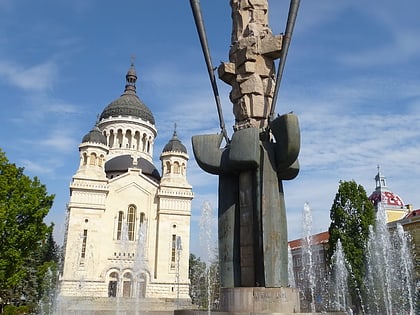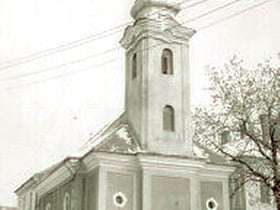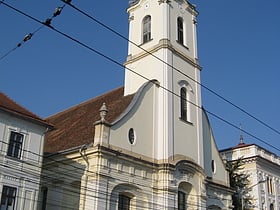
Cluj-Napoca Travel Guide
Facts and practical information
Nestled in the heart of Transylvania, Romania, Cluj-Napoca stands as a cultural and educational hub, rich with history and modern vibrancy. As the second-largest city in Romania, Cluj-Napoca, often simply called Cluj, is esteemed for its diverse architecture, burgeoning arts scene, and youthful energy, thanks in part to its large student population.
The city's historical center is a testament to its past, with landmarks such as St. Michael's Church, a stunning example of Gothic architecture, and the Banffy Palace, which now houses the National Art Museum. The old town's streets are lined with an array of architectural styles, from baroque to neoclassical, reflecting the city's evolution over centuries.
Cluj-Napoca is also known for its green spaces, with the Central Park and the Botanical Garden offering serene escapes within the urban landscape. The Botanical Garden is a particular delight, showcasing over 10,000 plant species and a Japanese garden that provides a tranquil retreat.
The city's cultural life is dynamic and diverse, with numerous festivals and events throughout the year. The Electric Castle and Untold music festivals have put Cluj on the international map, drawing in crowds from around the globe. The Transylvania International Film Festival celebrates the cinematic arts, further cementing Cluj-Napoca's reputation as a cultural nexus.
Education is a cornerstone of Cluj life, with the prestigious Babeș-Bolyai University attracting students from across Romania and beyond. This academic influence infuses the city with a vibrant, youthful energy that is palpable in the numerous cafes, bars, and eateries that cater to a diverse and cosmopolitan crowd.
For those interested in the natural beauty of the Transylvanian region, Cluj-Napoca serves as a gateway to the Apuseni Mountains, with their stunning landscapes and traditional villages. Outdoor enthusiasts can enjoy hiking, caving, and exploring the rich biodiversity of the region.
Culinary experiences in Cluj-Napoca are also noteworthy, with a mix of traditional Romanian dishes and international cuisine. Visitors should not miss trying local specialties such as sarmale (cabbage rolls), mici (grilled minced meat rolls), and the sweet kürtőskalács (chimney cake), which are readily available in the city's many restaurants and street food stalls.
Cluj-Napoca Attractions - What to See and Explore
Cluj-Napoca offers many attractions and places to visit. Here are the most important ones: St. Michael's Church, Cluj Arena, Cluj-Napoca Botanical Garden, Stadionul Dr. Constantin Rădulescu. Below you will find a complete list of places worth visiting.
Things to See and Do in Cluj-Napoca by Category
Sights, interesting and unusual places and attractions valued by most tourists. See the list of places to visit in Cluj-Napoca.
Culture
Active
Church
Museum
Park
Concerts and shows
Monuments and statues
Memorial
Other categories
TheaterNeighbourhoodUniversities and schoolsCluj-Napoca – popular in the area (distance from the center)
In the vicinity of Cluj-Napoca, it's worth seeing attractions such as: Turda Gorge (Turda), National Museum of the Union (Alba Iulia), Salina Turda (Turda).
Best Time To Visit Cluj-Napoca
Learn when is the best time to travel to Cluj-Napoca weather-wise and what to expect in each season.
Best Ways to Experience Cluj-Napoca
Food & drink
CuisineA guide to some of the best local dishes and drinks that you will meet in the region.






















































